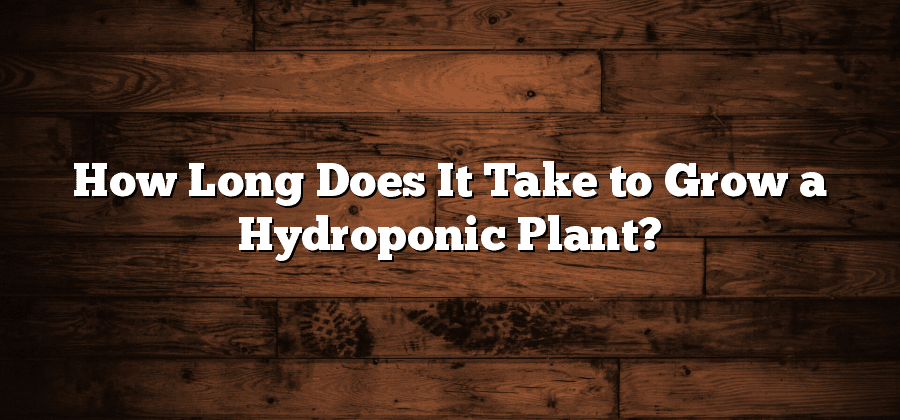Understanding the Growth Cycle of Hydroponic Plants
Hydroponic plants go through a growth cycle that consists of distinct stages. Understanding this cycle is crucial for managing and optimizing their growth in a controlled environment.
The first stage is germination, where seeds are provided with the necessary conditions to sprout and develop roots. This initial phase requires careful monitoring of temperature, humidity, and light to ensure proper and timely germination. Once the seeds have sprouted, they enter the vegetative stage. In this phase, plants focus on developing a strong root system and lush green foliage. Providing ample amounts of water, nutrients, and light during this period is essential for healthy growth.
Moving on to the flowering stage, hydroponic plants transition into producing flowers or fruits. This stage is characterized by the development of reproductive organs and the eventual formation of buds. During flowering, the light spectrum and intensity should be adjusted accordingly to promote optimal bud formation and maximize yield. After the flowering stage, hydroponic plants reach harvest time, where they are ready to be harvested for consumption or further processing. Timely harvest is crucial to ensure that the plants retain their quality and flavor.
Factors That Influence the Growth Rate of Hydroponic Plants
Factors That Influence the Growth Rate of Hydroponic Plants
Proper growth of hydroponic plants depends on various factors that need to be carefully managed to ensure optimal growth rates. One crucial factor is the quality of the water used in the hydroponic system. The water should be free from contaminants and have the appropriate pH level to allow plants to absorb nutrients efficiently. Additionally, maintaining the water temperature within the ideal range is essential to promote the growth of hydroponic plants. With optimal temperature conditions, plants can absorb nutrients more effectively, resulting in faster growth rates.
Another factor that significantly affects the growth rate of hydroponic plants is the balance of nutrients in the nutrient solution. Different plants require specific nutrient ratios to thrive, and having the right balance is crucial to their growth. It is essential to monitor and adjust the nutrient solution regularly to ensure that all the necessary elements are present in the correct proportions. Furthermore, the consistency of nutrient delivery is essential for sustained growth. Regular and precise nutrient feeding schedules help maintain the plants’ health and promote vigorous growth in hydroponic systems.
Selecting the Right Hydroponic System for Optimal Growth
When it comes to selecting the right hydroponic system for optimal growth, there are several factors that need to be considered. Firstly, it is important to understand the space available for your hydroponic set-up. This will determine the size and type of system you can accommodate. Whether you have limited space in a small greenhouse or ample room in a large indoor space, there are different systems available to suit your needs.
Another crucial factor to consider is the type of plants you plan to grow. Certain hydroponic systems are better suited for specific plants, depending on their root structure and nutrient requirements. For example, a nutrient film technique (NFT) system works well for plants with shallow root systems, while deeper-rooted plants may thrive in an ebb and flow system. Understanding the specific needs of your chosen plants will help guide you in selecting the most suitable hydroponic system for optimal growth.
The Importance of Providing Adequate Light for Hydroponic Plants
Adequate light is crucial for the growth and development of hydroponic plants. In a traditional garden, plants receive their light from the sun, but in a hydroponic system, artificial lighting is essential to mimic natural sunlight. Without sufficient light, plants may suffer from stunted growth, weak stems, pale leaves, and a diminished ability to produce flowers or fruit.
The type and intensity of light needed for hydroponic plants vary depending on the stage of growth. In the vegetative phase, plants require high-intensity light in the blue spectrum, which promotes strong leaf and stem development. During the flowering or fruiting phase, plants need light in the red spectrum to encourage the production of flowers and fruit. Additionally, the duration of light exposure is crucial, as it regulates the plant’s internal clock and influences its overall growth. Therefore, it is crucial to provide hydroponic plants with the right type, intensity, and duration of light to ensure optimal growth and yield.
Nutrient Requirements and Feeding Schedule for Hydroponic Plants
Hydroponic plants rely on a precise balance of nutrients to thrive and achieve optimal growth. These nutrients are typically provided through a liquid solution, known as the nutrient solution, which is circulated around the plants’ roots. The specific nutrient requirements vary depending on the type of plant, stage of growth, and environmental conditions.
Plants require a combination of macronutrients, such as nitrogen, phosphorus, and potassium, as well as micronutrients, including iron, manganese, and zinc. These nutrients are essential for various biochemical processes, including photosynthesis, cell division, and protein synthesis. It is crucial to provide hydroponic plants with the correct balance of nutrients to promote healthy growth and prevent deficiencies or toxicities. Additionally, the feeding schedule should be carefully designed to ensure that plants receive the necessary nutrients at the right time and in the appropriate quantities. Regular monitoring of nutrient levels and adjustments to the feeding schedule may be necessary to maintain optimal nutrient balance and promote strong, vibrant plants.






